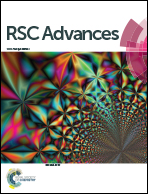Introducing random bio-terpene segments to high cis-polybutadiene: making elastomeric materials more sustainable†
Abstract
In this work, we explore the statistical copolymerization of 1,3-butadiene with the terpenic monomers myrcene and farnesene, carried out via coordination polymerization using a neodymium-based ternary catalytic system. The resultant copolymers, poly(butadiene-co-myrcene) and poly(butadiene-co-farnesene), were synthesized at different monomer ratios, elucidating the influence of the bio-based monomer content over the kinetic variables, molecular and thermal properties, and the reactivity constants (Fineman–Ross and Kelen–Tüdös methods) of the resultant copolymers. The results indicate that through the herein employed conditions, it is possible to obtain “more sustainable” high-cis (≈95%) polybutadiene elastomers with random and tunable content of bio-based monomer. Moreover, the polymers exhibit fairly high molecular weights and a rather low dispersity index. Upon copolymerization, the Tg of high-cis PB can be shifted from −106 to −75 °C (farnesene) or −107 to −64 °C (myrcene), without altering the microstructure control. This work contributes to the development of more environmentally friendly elastomers, to form “green” rubber materials.



 Please wait while we load your content...
Please wait while we load your content...